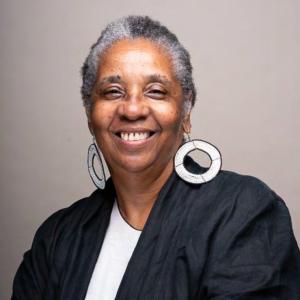Resources

To listen to this blogpost, click here. Gray. The fog, thick and dreary, descended in late December. In early January, the artic blast assaulted with negative temperatures prolonged over consecutive days. Unrelenting gray. Consuming gray. Days of gray have now turned into weeks of gray. Relief from ice and snow has come in the form of days of downpouring rains – with temperatures still below freezing. Today, the expected high is 36 degrees Fahrenheit, that feels like 32 degrees Fahrenheit, with continued dense fog and forecasted 80% chance of precipitation tomorrow. It has been a prolonged—too long—moment of melancholy—dull, grim, and bleak. Then it happened... A few days ago I received a text from a beloved friend that read, Hi Lynne, I accidentally had a book sent to your house. It’s called (title of book). I’ve read it before, a borrow from the library. It’s pretty … wild. But you may like it. Hope you like it. [Red Heart Emoji] Surprise! Suddenly, the gloom was challenged by a bit of intrigue. A surprise book, an accidental book, was coming to my door. I needed a surprise book, especially if it was “wild.” Sure enough, that day the Amazon delivery person dropped the book on my porch. Immediately, I started reading. Immediately, I discovered a new author. Immediately, my spirits lifted. There is something about surprise--when it is pleasant--that combats the dreariness of the season. A surprise can chase the blues away or at least make the blues melodic and survivable. Teaching in the dead of winter can sometimes mean teaching in prolonged frigid weather. Winter can be both real and metaphoric to describe our environments. We know that our bodies, minds, spirits react with and are affected by light, temperature, barometric pressure, and precipitations. Being mindful of your own mood and the moods of your students is part of classroom management and good teaching practices. Consider, when the moods are gray, planning a surprise. Too often planned surprises in courses are punitive—like surprise quizzes or surprise tests. That is not what I am talking about. I am talking about surprises that delight, intrigue, and bring some welcome relief from the long, too long, winter. When I received the marvelous book surprise from my friend, I was reminded of the ways I would attend to my own blue moods while teaching. I recalled some of the ways I would make gestures to bolster my students’ moods in the middle of the winter. I would, for them and for me, change the tempo of the course, introduce something or someone unexpected, and nurture a lighter-hearted atmosphere. Somehow, and most times, these gestures of care shifted us for the better. Here are a few examples of ways I went about changing pace and surprising my students: Brought a basket of chocolate to class to be passed; enough chocolate for all to have much Planned a spontaneous change of venue - moved the class session to the library, to the gym, to a science lab, or to a lobby of the building to sit on couches Invited a surprise guest lecturer; lecturer was the author of the book being read, former student who had done well in the course, local celebrity, Dean, Provost or President to discuss the topic of the course Planned a potluck or moved to the refectory for class—shared a meal during the class On a few occasions I brought my collie dog named Max to class. He was a warm and gentle giant who, as students arrived in the room, happily greeted those who wanted to play, then Max laid down at the door and slept until break when he received more pets and cuddles. Max’s presence lifted many spirits of students, and their glee made me smile. On several occasions, I thought of a class session as being like the “Free Parking” space in a monopoly game. Rather than what was planned for that session, I invited students to gather up their thoughts, questions, concerns, and we discussed whatever they wanted to discuss. Anything that came up! My conversation prompt would be—where are you in this learning? What have you learned thus far? Or I would suspend the planned session and gather students around (change in seating pattern) and ask them so what? /now what? questions. I would ask, how do you make meaning of this newly glimpsed perspective or new concepts? How does this affect your thinking, being, doing? What does your community, family, tribe think of what we are discussing? Is any of this valuable to your community? Brought art supplies to class and invited students, rather than taking notes, to draw, color, sketch, or work with play dough throughout the lecture Shifted to a skill-based lesson. What skills have you noticed that students do not possess, but you need them to be able to do? For example, good student skills of reading comprehension, writing skills, questioning skills. Showed a film complete with popcorn, soda, and candies Read aloud children’s books, poetry, or short stories You get the idea. Please be mindful that I am not saying for you to do what I did. Your context is different than mine and your teaching landscape is not mine. My point is to encourage and invite you to be aware of your own wintertime mood and the wintertime mood of your students, then adjust, modify – meet your students where they are, as they are. In the wintertime, sometimes the gloominess is better survived with a change of pace, with a gesture of care and warmth, with an acknowledgement that we need to be with one another but in gentler ways. If/when you can brighten the spirits of your students, your own spirit will be glad. Spring arrives on Tuesday, March 19, 2024, at 11:06 p.m. EDT. We teach in hope.

Many of us are familiar with the scripture from Jeremiah 1:5: “before you were formed in your mother’s womb, I knew you” (NIV). It reminds us of the immortal aspect of our human spirit. In the context of West African cosmologies, it is our spiritual essence that is with the Creator before we become human. That is to say, the aspects of our personhood which are in alignment with the cosmic design for harmony, justice, reciprocity, and balance. There are specific rituals that emphasize this immortal aspect of our being. Some of these rituals are commonplace in cultural expressions, like when we decide to name a child after a loved one who has passed away; remarking on that immortal aspect of that life that lives on and honors the family. So, we say to folks as ritual: “Say your name and say the names of the ones who named you!” This is a ritual of introduction. We see it in the South African ritual of greeting, “Sawubona,” which means I see you. I see you, your spiritual essence and all those in your lineage who carry this same essence. Libation is another ritual we find in the Bible and in multiple cultural traditions where the immortal aspect of our human spirit is recalled, elevated, and remembered as good for those who are in the present. In a libation, we invoke their name as a way of calling upon that immortal aspect of our being. We can construct rituals that remind us that we all come here with an immortal character. A way of being that is not contingent upon where we live, our social or economic status, our physical abilities nor our ethnic or gender identity. Nothing about our social location was “known” by our Creator to determine our Divine Consecrated Identity. Surely, we can consider this when we think about the social location of Hagar or the young brother Joseph, Mary, or Paul. Our social location can affect our consecrated self, but it does not determine it. Ritual can remind us of who we are when our social location attempts to derail us. Ritual calls forth our consecrated identity, the divine self before we were in our mother’s womb.

Delvyn Case · Ruach (Revised Version) The Hebrew word Ruach means both “breath” and “spirit.” Fundamental to this word (and to the Greek analogue, pneuma, which also is used in both ways) is a paradox. The notion of “spirit” denotes something ineffable and invisible - yet something that is always ready to break through and make itself known in a transformative way. Catholic mystics, African griots, and Christian Pentecostals are well-known examples of religious people who - when filled with the “spirit” – sing, dance, pray, feel, or see things that are amazing, powerful, and even out of their control. In the same way, “breath” is something simultaneously ineffable and invisible – yet also so fundamentally physical that our bodies do it without our conscious thought. We usually only become aware of our breathing when we experience something surprising or particularly important: when something beautiful makes us catch our breath, our something frightening makes us cry out in terror. In the same way, we are not usually aware of our “spirit” except in special circumstances: in a religious or spiritual state, for example, or when we have to call upon something deep within us in order to create – or to endure. This piece, Ruach, confronts this paradox by bringing to our awareness many different ways “breath” and “spirit” can become sonically and dramatic present. Throughout the piece the performers are asked to make various kinds of breath sounds with their instruments and their own voices, blurring the line between music and sound. Overall, the piece emphasizes idea of the spirit as a powerful force that is surprising, shocking, and fundamentally resistant to control.